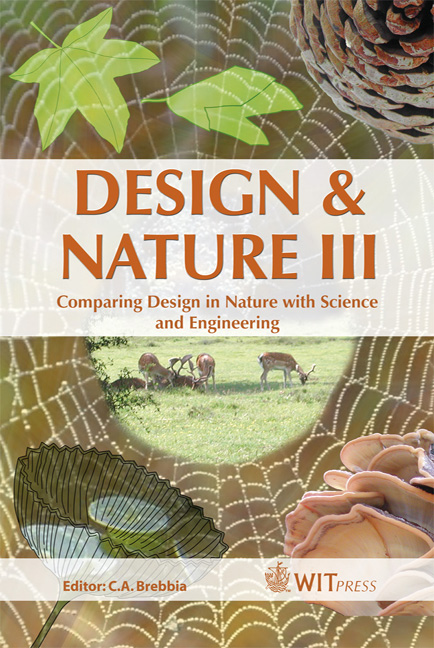Biomimetics Of Spider Silk Spinning Process
Price
Free (open access)
Transaction
Volume
87
Pages
10
Published
2006
Size
669 kb
Paper DOI
10.2495/DN060121
Copyright
WIT Press
Author(s)
G. De Luca & A. D. Rey
Abstract
Spiders, with their ultra-optimized spinning process, are able to produce super- fibers with remarkable mechanical properties. The precursor material is a lyotropic nematic liquid crystalline anisotropic fluid. The mechanical properties and processability of the silk fiber are intimately connected to the structural transition undergone by this ordered fluid through the spinning pathway. In this work we study a complex mesoscopic structure present in the extrusion duct of spiders’ spinning glands, whose stability depends on the interaction between point defects located on the axis of the cavity. The phenomenon described is important in understanding the process-induced structuring of silk fibers and to defect physics in a more general context. Keywords: spider’s silk, liquid crystalline spinning, nematic point defects. 1 Introduction Spiders ecologically produce fiberswith mechanical properties comparable or superior to the bestman-made superfibers [1, 2]. There is therefore a considerable interest in understanding the design and processing details of the silk-precursor materials. Green spinning processes as well as various exiting applications are envisaged upon the successful mimetic of spider extrusion system and fibers [3, 4, 5]. Spider silk fibers are spun from a highly concentrated water-based solution of elongated rod-like molecules or aggregates forming a lyotropic nematic liquid crystal phase [6, 7, 8]. This silk precursor can flow as a liquid while maintaining at the same time some degree of orientational order as a crystal. This orientational order is characterized by the tendency that have neighboring rod-like entities to align their long axis in parallel along a common direction [9, 10]. This preferred molecular orientation usually varies from subregion to subregion in the mesophase (i.e., intermediate phase) due to elastic effects coupled with geometrical and interfacial constraints [9]. The evolution of orientational order or molecular orientation
Keywords
spider’s silk, liquid crystalline spinning, nematic point defects.





